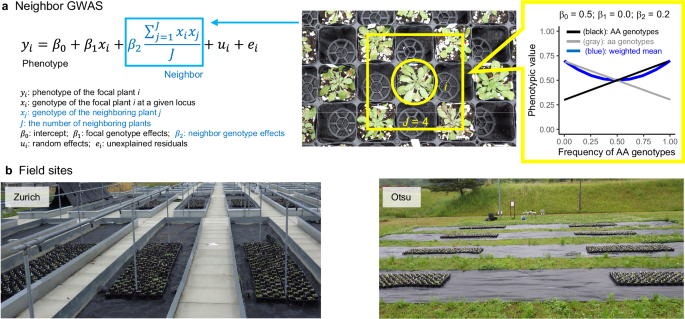An interesting study has reported the potential of “mixed cultivation,” where multiple varieties are cultivated in the same field. This time, I would like to discuss the possibilities of mixed cultivation.

The Potential of Mixed Cultivation
“Mixed cultivation,” which involves planting multiple plant species or varieties in the same field, brings various benefits. Although this is a technique that has been used since ancient times, it has recently begun to attract renewed attention.
An example of interspecies mixed cultivation is the simultaneous planting of corn, beans, and squash. This is a farming method traditionally used by Native Americans. Beans fix nitrogen from the air, aiding the growth of corn and squash, while corn serves as a trellis for the beans to climb. Additionally, squash covers the ground to suppress weeds and help regulate the soil temperature, preventing it from becoming too hot. This system allows for high-efficiency agriculture, where crop yields are ensured while the plants support each other’s growth.
Furthermore, even within the same species, effective cultivation can be achieved by planting different varieties together. For instance, by planting a variety that releases a compound that repels leaf-eating insects alongside a variety that repels root-eating insects, it is possible to reduce pest damage more effectively than if only one variety were planted. Ideally, a single variety with both strengths could be developed, but the characteristics of plants are influenced by many genes and factors, making it a time- and cost-intensive process to breed such a variety. Therefore, if similar effects can be achieved through mixed cultivation, it can be considered a highly effective technique.
While mixed cultivation appears to have many advantages, finding effective combinations is challenging and requires substantial effort, similar to breeding. Nevertheless, if effective combinations can be identified, it becomes possible to apply them directly to the field without developing a new variety, making it a “technology just one step short of a new variety” worthy of attention.
Establishing Technology to Identify Lines Suitable for Mixed Cultivation
Until now, identifying combinations of varieties suitable for mixed cultivation required testing an enormous number of varieties by actually cultivating them together and observing their reactions to pests, diseases, and climate.
However, with recent advancements in bioinformatics, it has become possible to assess the relationship between plant traits and genetic mutations. As a result, we can now predict the impact of specific genetic mutations on plant characteristics. Furthermore, it has also become possible to predict cases where combining different genetic mutations may produce synergistic effects.
With this technology, it is possible to design and develop new varieties when necessary, but breeding is not always required. By cultivating varieties with beneficial genetic mutations together in the same field, it is possible to achieve effects similar to those of cultivating a new variety.
In recent studies, success has been achieved in increasing pest resistance by simultaneously planting two lines with different resistances. Although this result was achieved with experimental plants, if it can be applied to horticultural crops in the future, the opportunity to use it for various varieties will expand.
Business Opportunities in Mixed Cultivation
If the development of mixed cultivation technology succeeds, various business opportunities may emerge.
Breeding Companies: New Uses for Existing Varieties
Breeding companies already possess many useful varieties, but some struggle to develop varieties that are both resistant to diseases and have high yields. By utilizing mixed cultivation, it may be possible to find new value in existing varieties.
Farmers: Increase Production Without Changing Cultivation Methods
Simply introducing high-functional new varieties does not necessarily increase yields. By determining whether the new variety is suitable for the cultivation area and adopting cultivation methods tailored to the new variety, the benefits can be realized. If there is already experience cultivating varieties suitable for mixed planting, combining them can lead to an easy increase in production.
Consumers: Access to High-Quality Crops at Affordable Prices with Low Environmental Impact
Since the initial investment in breeding is lower, there is no risk of crop prices skyrocketing. Additionally, as cultivation methods remain largely unchanged, environmental impact and costs associated with new technology introduction are expected to be minimized. As a result, consumers will be able to purchase high-quality crops produced through mixed cultivation at reasonable prices.
Expectations for the Development of Mixed Cultivation Technology
Mixed cultivation can be considered a sustainable technology that leverages existing varieties and cultivation techniques. In the future, along with the development of new varieties, “mixed cultivation technology” for improving cultivation may become more common. Let’s explore new business opportunities.



コメント